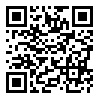Fri, Apr 26, 2024
[Archive]
Volume 8, Issue 1 (1-2018)
MJLTM 2018, 8(1): 83-95 |
Back to browse issues page
Download citation:
BibTeX | RIS | EndNote | Medlars | ProCite | Reference Manager | RefWorks
Send citation to:



BibTeX | RIS | EndNote | Medlars | ProCite | Reference Manager | RefWorks
Send citation to:
Language Proficiency and Students Behavior in the Classroom: A Comparative Study. MJLTM 2018; 8 (1) :83-95
URL: http://mjltm.org/article-1-208-en.html
URL: http://mjltm.org/article-1-208-en.html
Abstract: (3876 Views)
Introduction: The impact of teacher’s proficiency and the modes of second language instruction have long been a subject of debate among researchers. Effective English language instruction continues to be of paramount importance for educationists.
Background: The impact of teacher competence and their level of proficiency on the language have long been debated among scholars. A number of researches advocate that teacher’s competence in ESL (English Second Language) instruction is directly proportional to the student’s acquisition of knowledge. The methods of instruction and activities have a direct influence on the classroom behavior of students in second language classes.
Method: In an attempt to thoroughly understand the student’s perspective on the impact of language proficiency and student behavior in classrooms, a quantitative study was conducted to understand the student’s perception on the topic. A questionnaire was developed aimed at extracting the required information from the participants.
Conclusion: The results clearly indicated that the teacher’s proficiency on the language and the mode of instruction has a direct influence on the progress of ESL students. The results highlighted the need for improvised and effective modes of second language instruction to ensure student learning.
Background: The impact of teacher competence and their level of proficiency on the language have long been debated among scholars. A number of researches advocate that teacher’s competence in ESL (English Second Language) instruction is directly proportional to the student’s acquisition of knowledge. The methods of instruction and activities have a direct influence on the classroom behavior of students in second language classes.
Method: In an attempt to thoroughly understand the student’s perspective on the impact of language proficiency and student behavior in classrooms, a quantitative study was conducted to understand the student’s perception on the topic. A questionnaire was developed aimed at extracting the required information from the participants.
Conclusion: The results clearly indicated that the teacher’s proficiency on the language and the mode of instruction has a direct influence on the progress of ESL students. The results highlighted the need for improvised and effective modes of second language instruction to ensure student learning.
Type of Study: Research |
Subject:
Foreign language teaching and learning
Received: 2018/08/26 | Accepted: 2018/08/26 | Published: 2018/08/26
Received: 2018/08/26 | Accepted: 2018/08/26 | Published: 2018/08/26
References
1. Abdo, I. B., & Breen, G.-M. (2010). Teaching EFL to Jordanian Students: New Strategies for Enhancing English Acquisition in a Distinct Middle Eastern Student Population. Creative Education, 1, 39-50. doi:10.4236/ce.2010.11007
2. Appel, R., & Muysken, P. (2006). Language Contact & Bilingualism. Amsterdam: Amsterdam University Press.
3. Baker, B., & Markham, P. (2002). State School Funding Policies and Limited English Proficient Students. Bilingual Research Journal, 26(3), 659-680. doi:10.1080/15235882.2002.10162583
4. Bailey, K. M. 2006. Language Teacher Supervision: A Case-Based Approach. New York: Cambridge University Press. http://www.cambridge.org/other_files/downloads/esl/fourcorners/Pedagogical_Books/Compe-tence-and-Performance-Combined.pdf
5. Casteel, C., & Ballantyne, K. (Eds.). (2010). Professional Development in Action: Improving Teaching for English Learners. Washington, DC: National Clearinghouse for English Language Acquisition. http://www.ncela.gwu.edu/files/uploads/3/PDF
6. Cullen, R. (1994). Incorporating a Language Improvement Component in Teacher Training Programmes. ELT Journal, 48 (2): 162–72. http://www.cambridge.org/other_files/downloads/esl/fourcorners/ Pedagogical_Books/Competence-and-Performance-Combined.pdf
7. Guglielmi, R. (2008). Native language proficiency, English literacy, academic achievement, and occupational attainment in limited-English-proficient students: A latent growth modeling perspective. Journal of Educational Psychology, 100(2), 322-342. doi:10.1037/0022-0663.100.2.322
8. Hulstijn, J. H. (1992). Retention of Inferred and Given Word Meanings: Experiments in Incidental Vocabulary Learning. Vocabulary and Applied Linguistics. pp. 113-125. London: Macmillan. http://www.teslcanadajournal.ca/index.php/tesl/article/viewFile/1064/883
9. Lavender, S. (2002). Towards a Framework for Language Improvement within Short In-Service Teacher Development Programmes. Language in Language Teacher Education. pp. 237–50). http://www.cambridge.org /other_files/downloads/esl/fourcorners/Pedagogical_Books/Competence-and-Performance-Combined.pdf
10. Nassaji, H. (2003). L2 Vocabulary Learning from Context: Strategies, Knowledge Sources, and their Relationship with Success in L2 Lexical Inferencing. TESOL Quarterly. 37. 645-670 . http://www.teslcanad ajournal.ca/index.php/tesl/article/viewFile/1064/883
11. Richards, J. C., & Farrell, T. S. C. (2005). Professional Development for Language Teachers. New York: Cambridge University Press. http://www.cambridge.org/other_files/downloads/esl/fourcorners /Pedagogical_Books/Competence-and-Performance-Combined.pdf
12. Richards, J. C. (2001). Beyond Training. New York: Cambridge University Press
13. Seidlhofer, B. (1999). Double Standards: Teacher Education in the Expanding Circle. World English. 18 (2): 233–45. http://www.cambridge.org/other_files/downloads/esl/fourcorners/Pedagogical_Books/Competence-and-Performance-Combined.pdf
14. Snow, M. A., Kamhi-Stein, L. D. & Brinton, D. (2006). Teacher Training for English as a Lingua franca. Annual Review of Applied Linguistics. Vol: 26. pp. 261–81. http://www.cambridge.org/ other_files/ downloads/esl/fourcorners/Pedagogical_Books/Competence-and-Performance-Combined.pdf
15. Wesche, M. B., & Paribakht, T. S. (2000). Reading-Based Exercises in Second Language Vocabulary Learning: An Introspective Study. Modern Language Journal, 84 , 196-213. http://www.teslcanadajournal.ca/ index.php/tesl/article/viewFile/1064/883
16. Zoltan, D. (2001). Motivational Strategies in the Language Classroom. Cambridge: Cambridge University Press. http://www.cambridge.org/other_files/downloads/esl/fourcorners/Pedagogical_Books/Competence-and-Performance-Combined.pdf
| Rights and permissions | |
 |
This work is licensed under a Creative Commons Attribution-NonCommercial 4.0 International License. |



